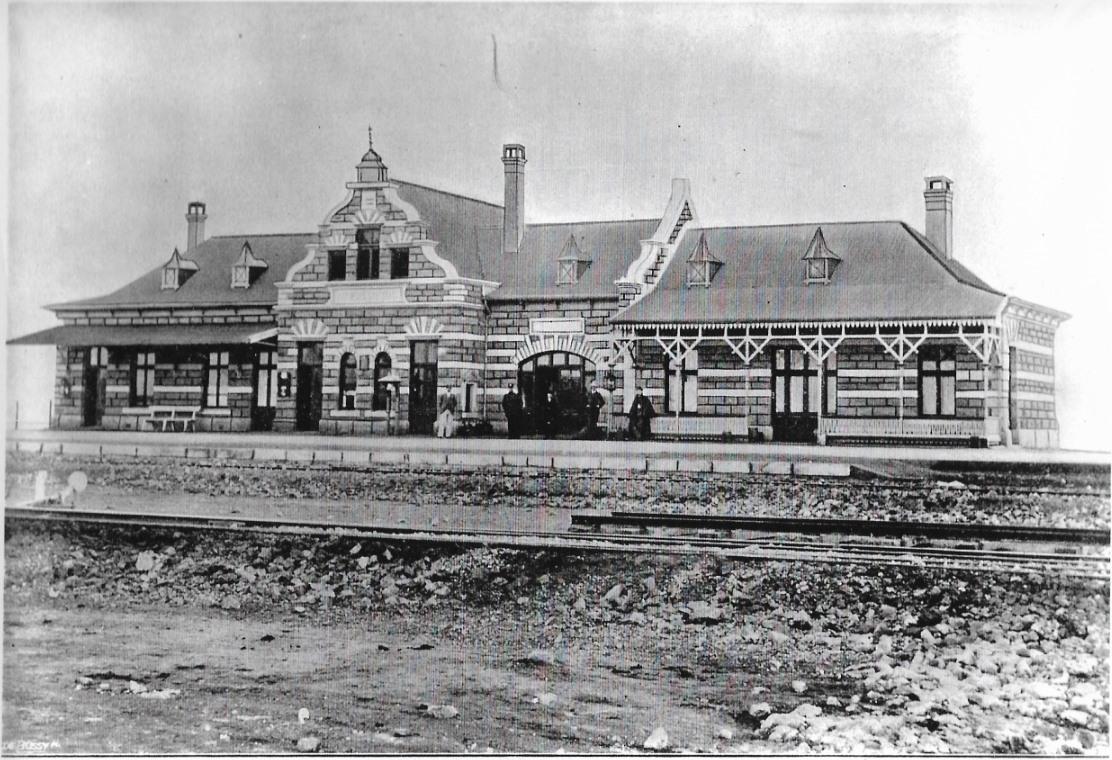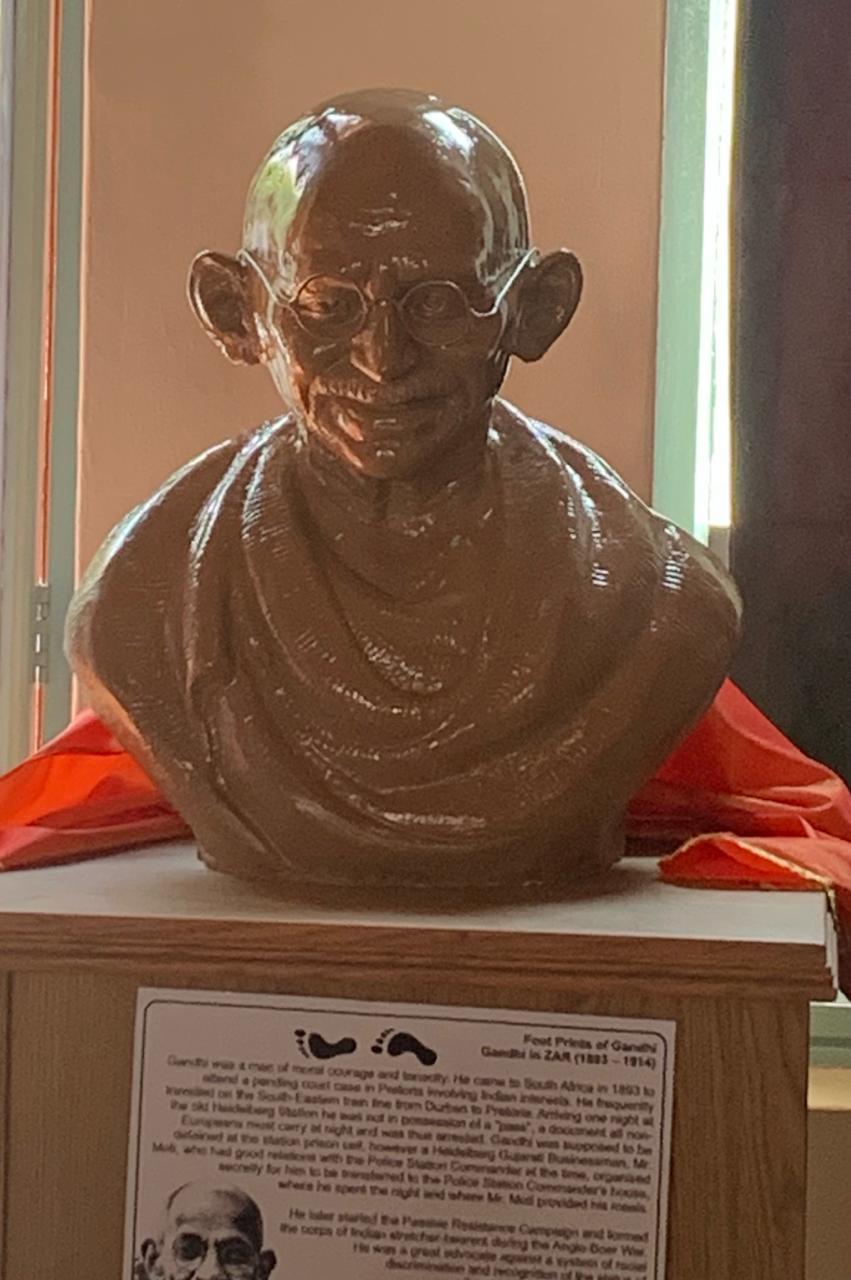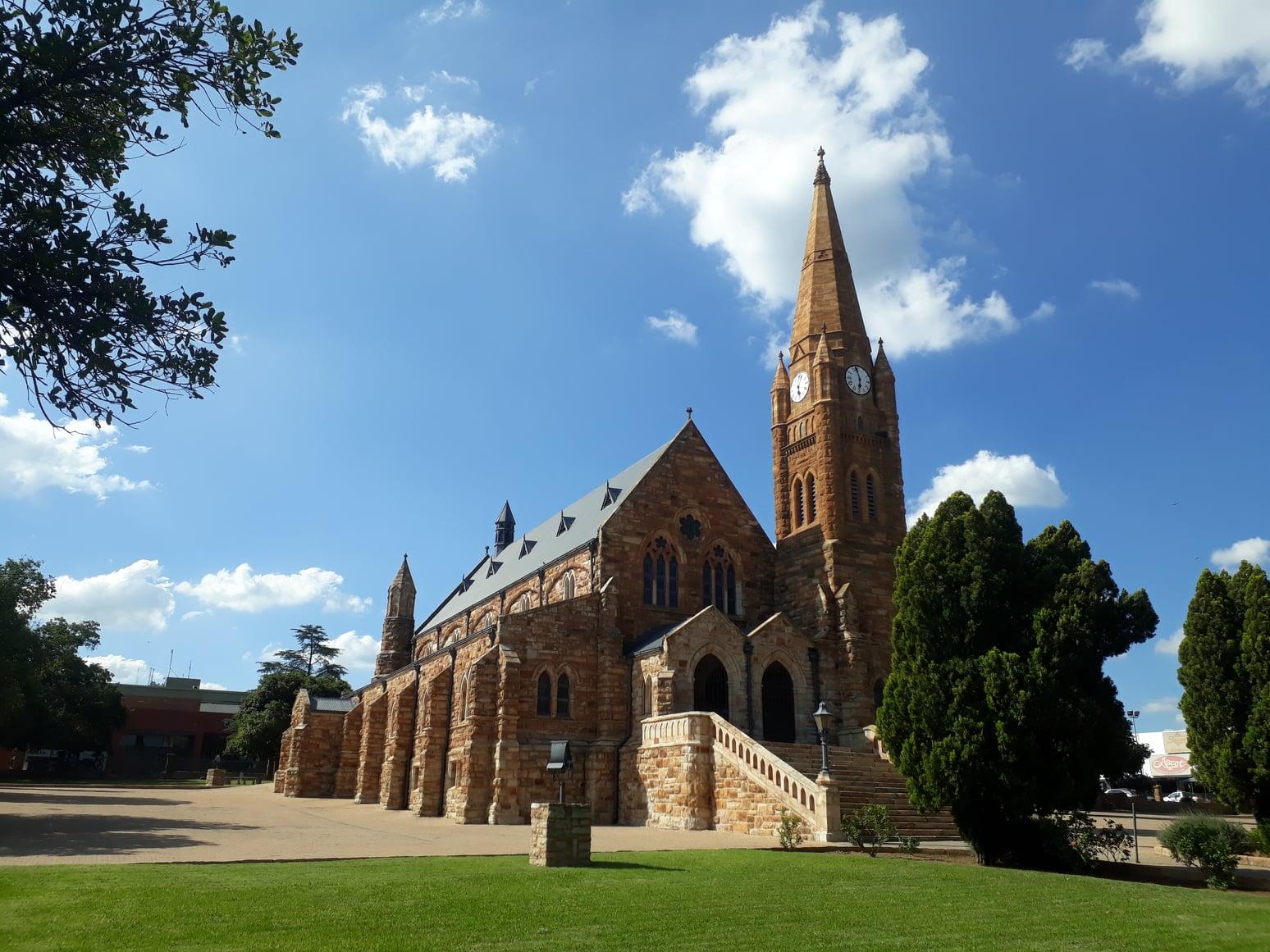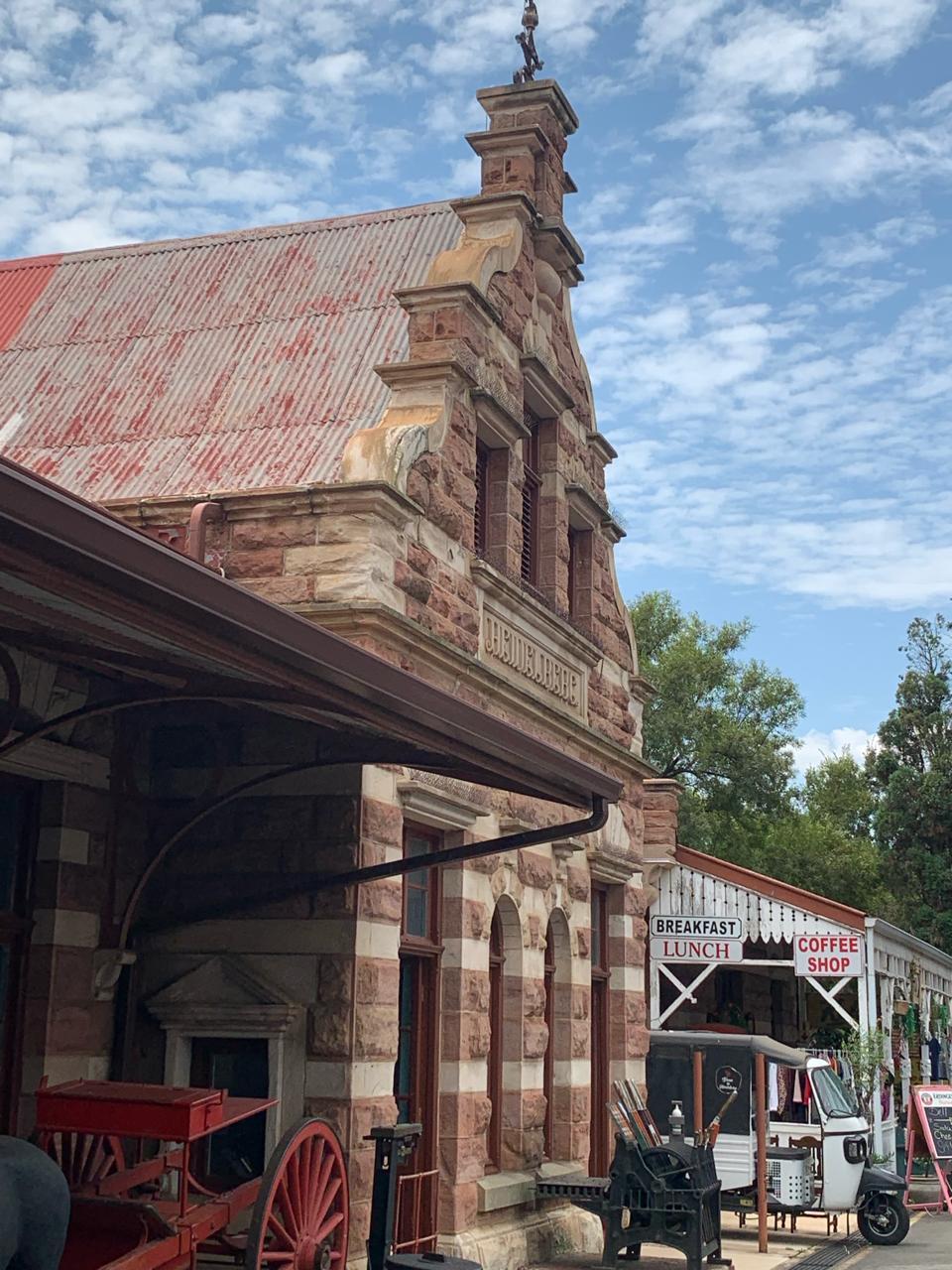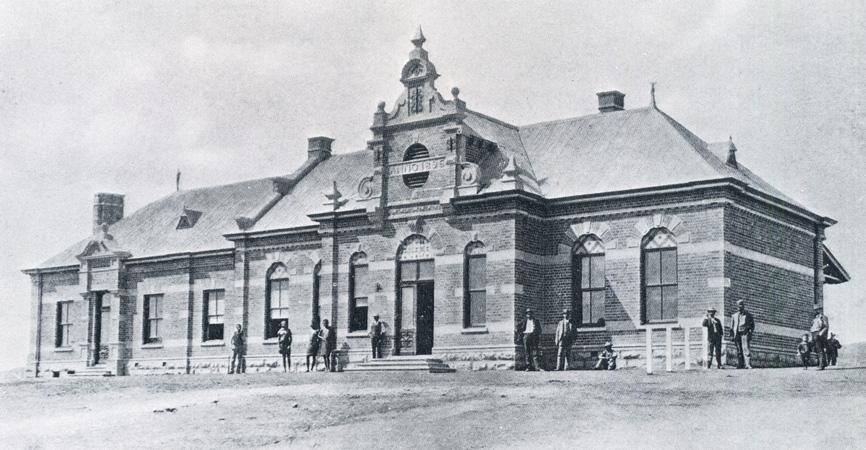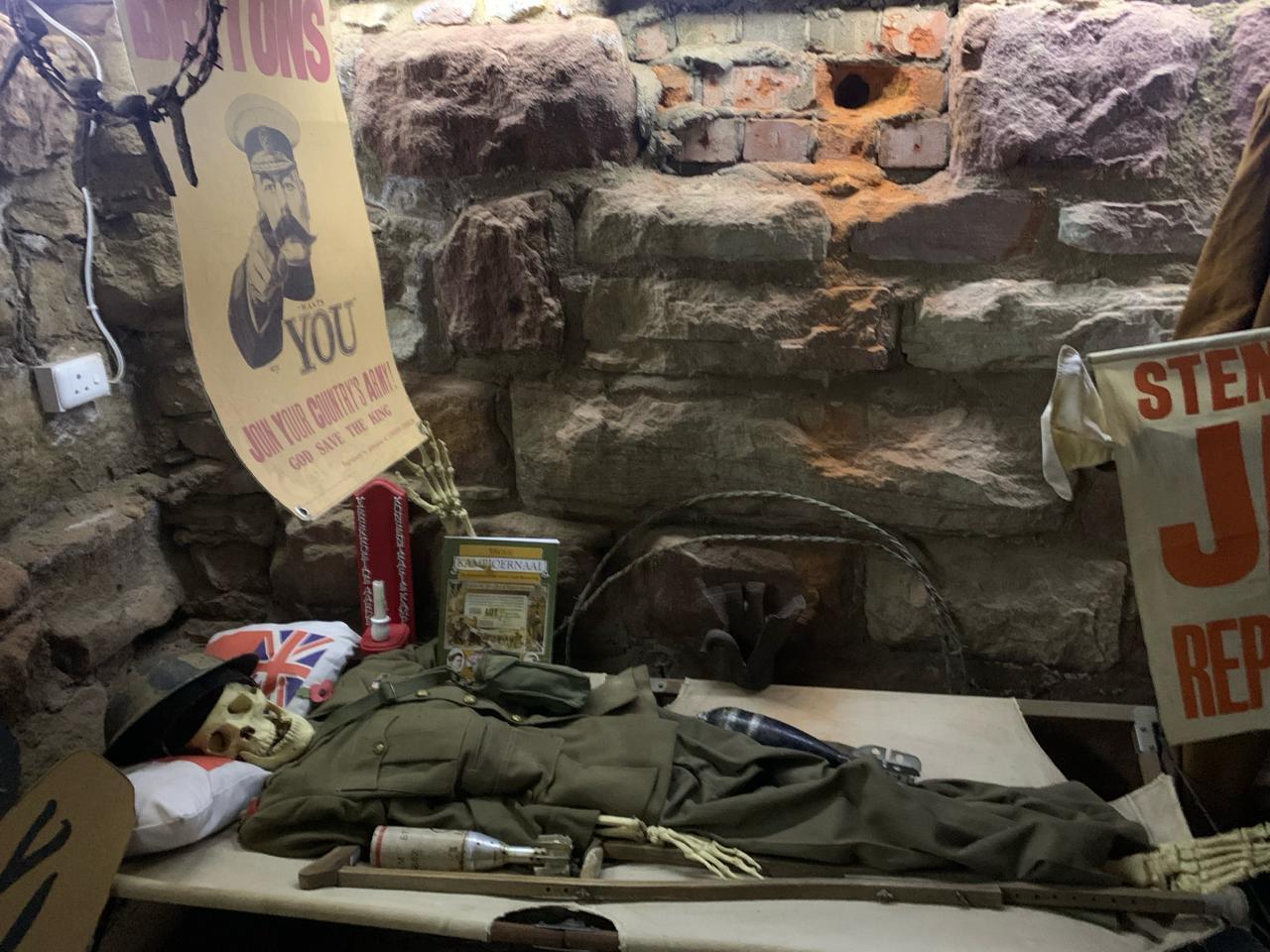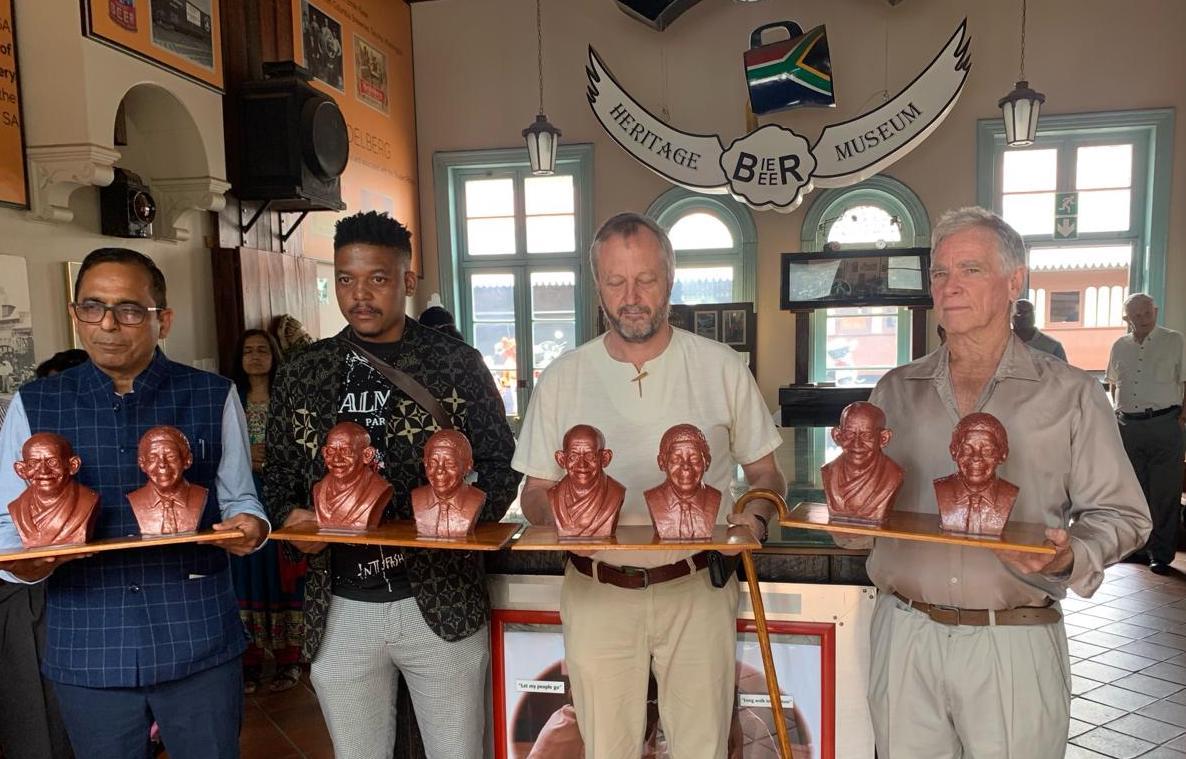
Disclaimer: Any views expressed by individuals and organisations are their own and do not in any way represent the views of The Heritage Portal. If you find any mistakes or historical inaccuracies, please contact the editor.
Heidelberg was my destination in late February 2024 to be the guest of the Moti family at the Old Station - today Heidelberg’s principal museum. I had last been to Heidelberg when I attended my first Heritage Association of South Africa symposium and met Tony Burisch.
Tony is the driving force behind Heidelberg heritage’s blue plaque movement. Over the years we have become firm friends in the cause of heritage. Tony and Bouwe Wiersma have put Heidelberg on the heritage map. So once again it was a pilgrimage to the town, now wearing my hat as the chairperson of HASA.
Old photo of the Heidelberg Railway Station (Heidelberg Heritage Association)
We and other dignitaries had all gathered for the the unveiling of a bust and plaque to celebrate a moment in Heidelberg’s history and a memory precious to the Moti family. We arrived to remember the service offered by a Gujariti businessman, a Mr Moti (the grandfather of Dayanaod Moti) to Gandhi when sometime in 1908 Gandhi was detained when passing through Heidelberg by train, for his lack of a pass to allow Indians and other Asiatic people to travel between the then separate post Boer War republics. It was one incident in a momentous year for Gandhi.
Perhaps the intention at the time was to hold Gandhi in the deep airless cellar basement of the station or at the Heidelberg Gaol, but the Police Station commander at the time arranged for Gandhi to be transferred to the commander's house to spend the night. Gandhi was a frugal eater and a strict vegetarian, and it was Mr Moti who provided his meals. The next day Gandhi resumed his journey and went on his way to Pretoria.
Unfortunately, the date of this incident is not known and relies on the oral history and the preserved memory of the Moti family. It is a precious memory indeed.
The bust was unveiled by the Consulate General of India, his Excellency, Mahesh Kumar along with the Executive Mayor of the Lesedi Local Municipality, Councillor Mluleki Nkosi. The bust itself portrays Gandhi not as he might have looked in 1908 but rather as the revered older Mahatma, the ascetic icon image of the struggle years in India.
Gandhi bust (Kathy Munro)
Key participants in the unveiling were presented with miniature busts of Mandela and Gandhi on this occasion (see main image) - a generous gift and reminding us that Mandela was welcomed to Heidelberg in 1996. He wrote a piece comparing the experiences of the two men as prisoners of conscience.
Heidelberg stands proud in the history of South Africa. The town was founded in 1862 as a trading station on the highveld of the Transvaal Republic by a German, a Heinrich Julius Ueckermann, who was a native of Heidelberg Germany. By 1865 the town had been laid out with the Church Square or Plein as the focal point. The beautiful Klip Kerk that we know today was the Hervormde Kerk dating from 1890. The town hall was designed by Gerhard Moerdijk and was built in 1937.
Klip Kerk, Heidelberg (Heidelberg Heritage Association)
Heidelberg had its own landrost or magistrate so legal matters for this district had to be handled by the court in the town. During the first Anglo Boer War or the First War of Independence, Heidelberg became the capital of the Boer Republic between 1880 and 1883 when Pretoria was occupied by Shepstone. When gold was discovered on the Witwatersrand and Johannesburg was a mining camp, the office of the Mining Commissioner was established here, and Johannesburg mining claims had either to be registered in Pretoria or in Heidelberg.
Heidelberg’s old railway station, now the museum is a fine example of NZASM (the Netherlands railway company’s endeavours of the 1890s) Wilhelmiens architectural style. Constructed of sandstone with a stepped gable created from carefully chamfered building blocks, it is rather like a Dutch dolls house.
Facade of the station building (Kathy Munro)
The building was designed by the architect Victor Alexander Van Lissa who was the principal architect of the NZASM company and was responsible for a number of other railway stations including Klerksdorp, Krugersdorp, Middleburg, Potchefstroom and Volksrust according to de Kock. The foundation stone was laid in 1894 by H Westenberg the railway company’s section engineer.
Old photo of Krugersdorp Railway Station
The station remained in use until 1961 when a new station was built further out of town. The building was declared a national monument in 1975. It then housed the Rupert Foundation’s Transport Museum. It has today been resurrected as a fine and much moved museum, coffee shop, craft beer brewery and restaurant, the brainchild of Bouwe Wiersma, local attorney and businessman.
The museum offers a fascinating display of typical household objects from a rural town and the many communities of Heidelberg. It’s the sort of place where when you see an old fashioned kitchen mincer you will explain “my grandmother had one of those”. Other artefacts include an historic clock, a poster of the Beer Wars of Luyt and Rupert, a field ambulance of the type used in Boer War battles, and rock samples from nearby gold mines. It’s a homely place that raises interest and sparks pride in Heidelberg. The restaurant is entered through the railway carriages on the original station platforms. The cast iron roof supports, over the high corrugated iron platform room would have been supported and show a touch of art nouveau style.
It was Bouwe who gave our party a tour of the cellar, reached via some steep wooden stairs in the museum shop. The cellar cell has been carved out of the solid foundations of the station. A tight space has been imaginatively laid out as the perfect museum horror experience complete with a uniformed skeleton on a stretcher bed!
The uniformed skeleton (Kathy Munro)
The year 1908 was an auspicious year for Gandhi, as it was the year of struggle against the anti-Asiatic legislation of the Transvaal enacted in 1907. The legislation required licences to trade and required all Asiatic people (Indians and Chinese) to register and hence obtain a pass. Gandhi, as a lawyer, defended traders trading without licenses. It was the year Gandhi formally adopted the word Satyagraha, a Gujarati word for passive resistance. Gandhi himself was tried and sentenced to two months imprisonment. There followed a period of negotiation and compromise, with Gandhi ready to agree to voluntary registration in return for the repeal of the TVRA Act (the Transvaal Asiatic Registration Act 2). Gandhi was formally released from prison on 30th January followed by the release the next day of all Satyagrahis. Gandhi was prepared to accept voluntary registration, urging educated Indians to sign their registration applications rather than provide the demeaning fingerprint form of identification. It was a year of compromise, disappointment, disillusionment, back tracking by Smuts and the Transvaal government and resumption of passive resistance tactics. It was to be a long struggle that culminated in the third campaign in the latter months of 1913 with the great march of passive resisters across the Natal – Transvaal border from Volksrust to Standerton.
At the unveiling event, we were each presented with a postcard of Gandhi together with Gopal Krishna Gokhale, both part of a formal large group of civic dignitaries. Gokhale was the president of the Indian National Congress and the mentor of Gandhi. He toured South Africa by train for a month between October and November 1912, in the company of Gandhi. We can date this postcard exactly as it was on 13th November when the Gandhi-Gokhale party made whistle stops at Volksrust, Standerton and Heidelberg and that evening they reached Pretoria. The postcard is incorrectly dated in a print description as 1910. I would love to lay my hands on photographs of the Volksrust and Standerton festivities.
I was reminded that heritage differs from history. Heritage today is those snatched events and places preserved from the past that have meaning for the present. We value heritage if we can relate to people and happenings in a personal way. Sometimes oral tradition takes the place of documented factual history. Heidelberg has a strong claim to history and heritage – the evidence is before our eyes in a remarkable range of well-preserved buildings dating from the period 1890 to 1910 and even later.
Our thanks to the Moti family for their warm welcome to HASA and their generous hospitality.
Kathy Munro is an Honorary Associate Professor in the School of Architecture and Planning at the University of the Witwatersrand. She enjoyed a long career as an academic and in management at Wits University. She trained as an economic historian. She is an enthusiastic book person and has built her own somewhat eclectic book collection over 40 years. Her interests cover Africana, Johannesburg history, history, art history, travel, business and banking histories. She researches and writes on historical architecture and heritage matters. She is a member of the Board of the Johannesburg Heritage Foundation and is a docent at the Wits Arts Museum. She is currently working on a couple of projects on Johannesburg architects and is researching South African architects, war cemeteries and memorials. Kathy is a member of the online book community the Library thing and recommends this cataloging website and worldwide network as a book lover's haven. She is also the Chairperson of HASA.
Comments will load below. If for any reason none appear click here for some troubleshooting tips. If you would like to post a comment and need instructions click here.

